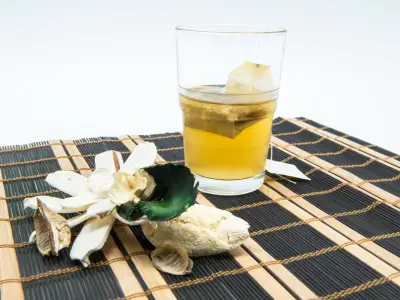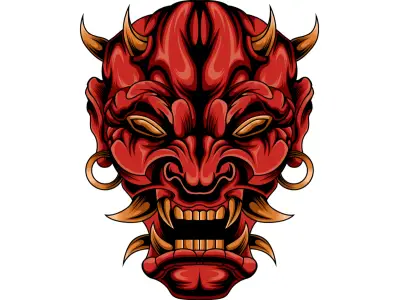The human body has seven main energy centres, known as chakras. The key to good physical, emotional, and spiritual health can be found in balancing these energetic points, so getting to know your chakras is essential for your overall wellbeing. In this article, we’ll explore everything you need to know about chakras and their meaning in the modern world.
Understanding the Seven Chakras
Chakras, which translate to wheel or circle, are energy points referenced in many ancient traditions, including Buddhism, Hinduism, and Yoga. They are the focus of our energetic body and can be open or closed depending on a number of factors.
The chakra system cannot be seen but rather sensed and felt, especially by those with intuitive or energetic gifts. There are over one hundred chakras that cover the whole body, but in this guide, we’ll focus on the seven main energy centres.
Jump to:
Root Chakra
Name: Muladhara
Location: base of the spine
Colour: red
Element: Earth
The root chakra is the first main chakra and is associated with stability and safety. This includes meeting basic needs such as food, shelter, and survival.
This is one of the most important chakras to focus on, as everything begins with a strong foundation. You can’t progress to the next stage in your self-growth journey if you feel unsafe or ungrounded.
A person with a healthy root chakra feels safe in their environment and comfortable in their physical identity. They will often have strong ties to their family, friends, and the wider community.
If the root chakra is unbalanced, you may suffer from leg or lower back problems or feelings of anxiety.
Sacral Chakra
Name: Swadhisthana
Location: lower abdomen
Colour: orange
Element: water
The sacral chakra is the home of sexuality, creativity, and passion. It is the seat of our emotions and links to our overall enjoyment of life.
This chakra is essential for maintaining healthy relationships and learning to share your creative gifts with the world. It is also the home of play and harmony.
A person with a healthy sacral chakra feels at ease with intimacy and connection and is comfortable expressing their emotions.
A blocked sacral chakra shows up as an unwillingness to connect with others or express creativity, as well as reproductive issues and infections.
Solar Plexus Chakra
Name: Manipura
Location: upper abdomen
Colour: yellow
Element: fire
The solar plexus chakra is the seat of willpower, strength, and determination. It is associated with confidence in showing up in the world, as well as speaking your mind.
This chakra is all about taking control of your life and forming healthy habits and routines, and taking action towards your soul purpose.
A balanced solar plexus chakra manifests as a natural confidence in yourself and your abilities and a willingness to be brave and move out of your comfort zone.
Someone with a blocked solar plexus chakra might experience digestive issues, weight issues, or a lack of self-confidence. If this chakra is overactive, aggression usually arises.
Heart Chakra
Name: Anahata
Location: centre of the chest
Colour: green
Element: air
Anything relating to love for oneself and others, compassion, and forgiveness is linked to the heart chakra. It is the home of joy, laughter, and warmth and is the most recognised chakra.
The heart chakra encourages you to love fully and completely, without judgement or fear. It also invites you to trust in life and follow the path of love.
A person with a balanced and healthy heart chakra radiates warmth and care. You have deep levels of respect for others and also yourself. There is a letting go in taking things personally as you realise that all humans are trying their best with what they have.
Someone with a blocked heart chakra may feel closed off to love and wary of others due to a fear of being hurt. If this chakra is overactive, there might be a tendency to overgive.
Throat Chakra
Name: Vishudda
Location: throat
Colour: light blue
Element: sound/music
The throat chakra is the home of communication, expression, and authenticity. It links to the heart chakra by giving you the ability to speak your most heartfelt desires.
It is associated with self-empowerment and being confident in speaking up for yourself when necessary. A healthy throat chakra is essential for allowing creativity to flow.
The main characteristic of a person with an open throat chakra is confidence in communicating and a gift for articulating opinions with clarity and balance.
A blocked throat chakra can show up as speech impediments, thyroid issues, or neck pain. It can also manifest in an ability to stand up for yourself and a fear of rejection.
Third Eye Chakra
Name: Ajna
Location: centre of the forehead
Colour: indigo
Element: light
If you’re a highly intuitive person, it’s likely that you have an open and healthy third eye chakra. This is the home of inner wisdom, psychic abilities, and a connection to other realms.
The third eye chakra is often known as the eye of the soul and links to your ability to dream, imagine, and visualise. It’s a very powerful chakra and important for self-awareness.
A person with an open and flowing third eye chakra will likely have an excellent sense of perception, insight, and inner knowing. You feel at ease trusting your instincts.
Someone with a blocked third eye chakra may experience nervous system issues, poor eye health, or insomnia. If this chakra is too open, nightmares and anxiety are likely.
Crown Chakra
Name: Sahasrana
Location: top of the head
Colour: violet and white
Element: consciousness
Sometimes called the chakra of a thousand petals, the crown chakra is the seat of divine consciousness and the home of your spiritual self.
This chakra is the most spiritually advanced energy point within the body, and very few people ever fully open this chakra. It is activated in people who become enlightened.
A healthy crown chakra shows up as a deep appreciation for the beauty of life, the ability to maintain a presence, and a liberation from limiting beliefs and behaviours.
Someone with a blocked crown chakra may experience a cynical and pessimistic outlook on life, a lack of coordination, or headaches/migraines.
Which chakra is blocked?
Now that you have a good understanding of the chakra system and the characteristics of each energy point, it’s essential to learn your own chakra blockages and how to balance them. Always seek professional medical advice alongside your spiritual practice.
Common Symptoms
Chakra blocks can be categorised into three types: physical, emotional, and mental. Take note of your current health and wellbeing in each of these areas and you’ll be able to identify the chakras you need to focus on.
Physical symptoms
Leg pain, back pain, reproductive issues, digestive issues, muscle stiffness or soreness, inflexibility, unexplained aches, immune system problems, etc.
If you’re suffering from physical symptoms similar to the ones mentioned above, it’s important to balance your lower chakras (root chakra, sacral chakra, and solar plexus chakra).
Focus on cultivating feelings of safety and calmness. As you create a feeling of safety within the body, you will encourage your lower chakras to balance and begin flowing again. Spending time in nature, gentle yoga, and eating grounding meals will help you feel safe within your body.
Emotional symptoms
Anxiety, irritability, sensitivity, depression, lack of trust, numbness, lack of expression, excessive fear, mood swings, bitterness, anger, overwhelm, etc.
If you’re suffering from emotional symptoms, including the ones mentioned in the list above, it’s a good idea to balance your middle chakras (heart chakra and throat chakra).
Focus on cultivating feelings of trust and balance. Learn to express your feelings in a healthy way, connect with your inner child, and cultivate self-compassion. As you learn to trust yourself, you will learn to trust others, and you will naturally balance your heart and throat chakras.
Mental symptoms
Difficulty concentrating or relaxing, sleep issues, feelings of disconnection, overthinking, lack of imagination, headaches or migraines, fatigue, etc.
If you’re experiencing mental symptoms such as the ones listed above, it’s likely that you need to balance your higher chakras (third eye chakra and crown chakra).
Cultivate feelings of connectedness and flow. If you’re too mentally stimulated, invite feelings of relaxation into your life. You don’t have to control everything. It’s ok to trust the flow of life. Learning to place your faith in something bigger than yourself will balance the higher chakras.
Your intuition is always your best guide when it comes to identifying blocked chakras. The more you strengthen your intuition and practise listening to yourself, the more in tune you’ll be with your unique energy flow.
Maintaining Chakra Balance
Healing your chakras requires dedication to your spiritual and wellbeing practices. The more you focus on your overall health, the more likely your chakras are to be balanced and flowing. To maintain chakra balance, try the following methods on a regular basis in order to promote a healthy, energetic body.
Meditation
Regular meditation is beneficial for all aspects of health and important for spiritual growth. The amazing thing about meditation is that there are so many different types you are bound to find a technique that works for you. Whether you’re a complete beginner or already a regular mediator, developing a meditation practice is essential to chakra health.
Movement
Most forms of movement are excellent for regulating the chakras. Whether you enjoy walking, swimming, or dancing, being active on a regular basis is an excellent way to encourage a healthy energy flow through your chakras and also helps release tension and stress. Engage in the types of movement that bring you the most joy, and your chakras will regulate better than ever.
Self-reflection
Reflecting on your self-growth journey allows you to notice where you still need to grow and what chakras need your attention. You can do this by journaling, speaking with loved ones, or working with a coach or mentor. Facing your challenges head-on encourages resilience and boosts self-confidence, which is essential for overall health.
The Seven Chakras and Their Meanings: A Summary
The human energy system consists of hundreds of chakras, but the seven main chakras are the most important for your health and wellbeing. Each chakra has its own purpose, and by getting to know your chakras, you can learn how to identify chakra blocks. Your intuition is always your best guide when it comes to connecting with your energy centres.
Take your knowledge of chakras and energy healing to the next level by enrolling in our Aura Healing and Chakra Healing Diploma Course and our Energy Anatomy Diploma Course, available for £29 each (saving £98!). Become an expert in energy anatomy, chakra balancing, and how to conduct healing sessions. If you’re an intuitive person looking to develop your spiritual practice, these are the courses for you!




